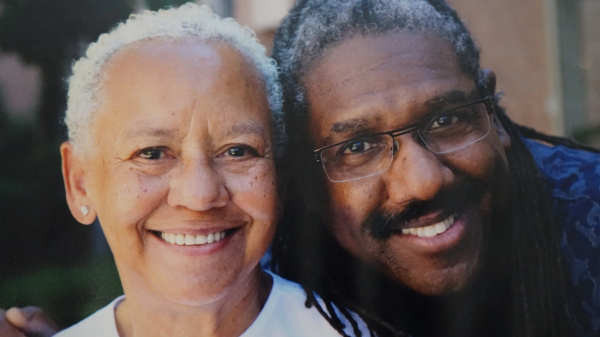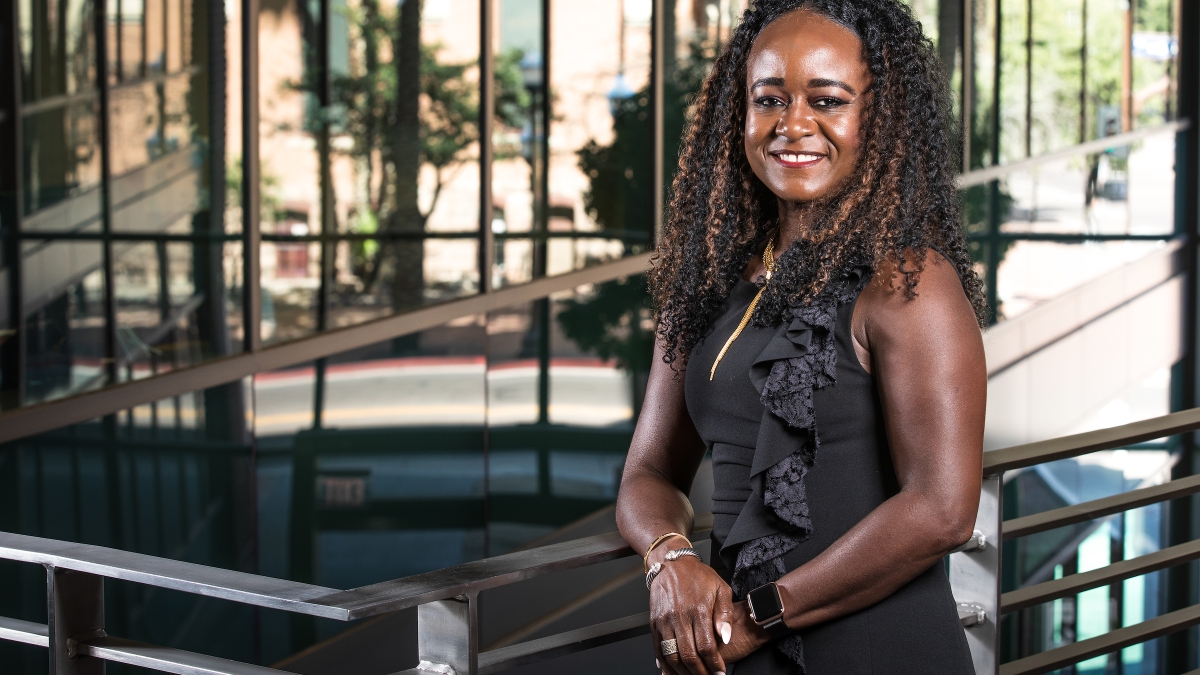Cheryl Hyman has traveled the pathway to success. Now, she wants to make sure it is available for others. Many, many others.
Arizona State University’s new vice provost for academic alliances, Hyman came from a family that lived in public housing on the west side of Chicago. She was once a high school dropout, and her road to a better life through education started in the community college system. From there, she went on to receive a bachelor’s degree, a master’s degree and an MBA. Her message? If I can do it, you can, too.
Hyman arrived at ASU in January of this year after six years as the chancellor of City Colleges of Chicago, replacing Maria Hesse, who retired from ASU as the 2019 spring semester came to a close. After a period of transition into America’s most innovative university, Hyman has developed a new strategic plan — one that builds on the foundation Hesse helped ASU establish.
“Maria did a tremendous job building a foundation with community colleges,” Hyman said. “My focus is taking us from a partnership to a platform. We need to have more integrated systems where we are leveraging each other’s strengths and offerings. So now, our community college partners become another platform for us to help figure out how to get people from where they are to where they want to be.”
Video by Deanna Dent/ASU Now
Providing service for universal learning is central to the mission, according to Hyman. And inevitably, that means a higher volume of students.
“Everybody in higher ed will be forced to deal with not just servicing students, but how to re-service, and re-service,” Hyman said. “People are not staying 30 years in jobs anymore. They are constantly transitioning in and out of education for various reasons, whether it be life, reschooling or retooling. And as they do that, we have to reposition to respond and change very rapidly.
“We need to use our alliances to help position ASU as the premier platform for universal learning.”
Hyman says that will require a focus in three areas: expansion, integration and opportunity identification.
From Hyman’s perspective, expansion is not about “growth just for the sake of growing ASU.” It’s about expanding opportunity for the large percentage of the population that is not pursuing a postsecondary education. And that means helping people find their way.
“The people who aren’t going to college, I don’t believe it’s because they don’t want to. I don’t believe it’s because they don’t see everything that’s happening in the world,” she said. “But I do believe it’s because no one is helping them understand what it means to them and then helping guide them through that process.”
So, when Hyman talks about expansion, she means helping people navigate their way through the system and helping them understand how to obtain the credentials that will translate into something tangible. With the volume of people who will need to behave as universal learners, the days of a one-on-one relationship with an adviser are over. ASU’s transfer tools offer students a way to do it themselves.
“ASU has a very robust transfer tool,” Hyman said. “It has been tried and tested with many of our community college partners and allows students to self-navigate. It enables them to create a pathway based on what’s offered at their community college, wherever it might be, and what’s offered at ASU. Students can go there and view their course equivalencies and figure out how to build a very robust associate degree that prepares them for the discipline they want at ASU. If they follow that pathway, they have guaranteed program admission into ASU, in their discipline of choice, without loss of time or credit.”
The tool functions independent of a traditional personal adviser — with a 1,000-to-1 adviser-to-student ratio in Arizona, the need for digital tools is critical.
“Right now, we have more than 600,000 course equivalencies with almost any public institution,” Hyman said. “In my opinion, all those institutions should have access to this tool, and so should their students. So it’s not a tool just for ASU. How do you create it so other institutions, no matter where they are, can have access? How do you get more students to use these tools so they don’t have loss of time or credit?”
That’s where Hyman’s focus on integration comes in.
“The universal learner is going to be weaving in and out of education for a lifetime,” Hyman said. “So, we want tools that work for anyone in any state that help them figure out how to transfer in and out, back and forth, that take them from where they are to where they want to be.”
The key is awareness — knowing what options exist.
“I believe that most people act on the limited information they have,” Hyman said. “If you don’t have access to a wide network of social capital, many people helping you navigate and make choices, a lot of times you’re stopped at just not knowing what to do.”
Hyman sees ASU as an innovator and a leader that can create models to be replicated by others in higher education.
Hence, her third focus — identifying opportunities. That, she says, is a team sport.
“The question for me is, how do I help everyone else in ASU leverage our alliances to service this population? How can we work with business, industry, state systems to help them service that population?” she said. “Creating a platform means ASU doesn’t have to do everything by itself. We can serve as a conduit for helping people get from where they are to where they want to be by connecting them to what they need through our alliance partners, not just transfer institutions.”
From Hyman’s perspective, addressing the challenge of disruption in the work environment and the need for more college-educated talent transcends her role at the university.
“Everything I do, not just here but in my past work, it’s not just for the institution itself; it’s aimed at how you solve the larger crisis,” she said. “Everything we're doing nationally, everything we’re doing locally — I’m doing it in a mindset of building a model for others.
“ASU can’t be the only institution for universal learning, but it certainly can be the designer of it.”
Top photo: Cheryl Hyman, vice provost for academic alliances, leads academic partnerships between ASU and community colleges, both locally and nationally, ensuring that students who wish to pursue an undergraduate degree have the resources and a pathway to successfully transition to ASU. Photo by Charlie Leight/ASU Now
More Arts, humanities and education

School of Social Transformation faculty member assumes new title with NSF
School of Social Transformation faculty member and Founding Executive Director of the Center for Gender Equity in Science and Technology (CGEST) Kimberly Scott is accepting a new position…

ASU's Neal Lester reflects on life, death of poet Nikki Giovanni
When Neal Lester heard on Monday that poet and activist Nikki Giovanni had died, the news hit hard.Lester, the founding director of Arizona State University’s Project Humanities and a Foundation…

Learning by stepping outside
By Adriana MaestasAmid a world increasingly captivated by all things digital, more than 200 Arizona teachers have crafted immersive educational experiences that nudge students to step away from their…
